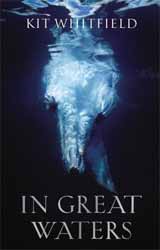|
Click here to return to the main site. Book Review
Henry is the pagan offspring of a human male and a deepsman - humanoid creatures that in the Ninth Century invaded Venice and placed their progeny on the thrones of Europe. But now that strong line is failing, and with it the hope of peace. Anne is one of the last strong Christian princesses of England, whose bloodline has been tainted with too much inbreeding. Without being aware of each others existence the Henry and the Anne hold out the last hope of securing the throne and averting a devastating war... In Great Waters is Kit Whitfield’s second novel following on from her success with Bareback. The book takes a basic court intrigue, beloved of historical dramas, and adds an extra spin by creating a new race and a new history for the world. In this new world Deepsmen, the description of which is almost identical to mermen, are a tribal race which lives almost exclusively in the sea. History takes a turning when the Deepsmen invade Venice, after a stalemate, the Deepsmen join the Venetians to repel an invasion. The price they pay is to have a Deepsman queen, who sets about replacing the nobility with her own bloodline. Many years have passed and that bloodline is running thin. The first third of the book is told from the perspective of Henry and Anne, the two main protagonists. Henry, a half breed who has been rejected by his mother and expelled from the sea. Having been found by a nobleman, who plans to use the boy to seize the throne, we follow Henry’s introduction into the bewildering world of the humans, take with him his first steps and watch him struggle with human speech and concepts. Whilst Henry is low born, Anne is a princess of the royal court. Though they do not know each other both characters share a sense of alienation, Henry because he is almost literally a fish out of water and Anne because of her Deepsman heritage, which has left her with a face which glows leaving her eyes seemingly deep socketed and unreadable - nor is she the favourite daughter, this place is taken by her more human sister. Whitfield writes well, slowly painting a picture of both characters and the world in which they live, though I have a concern that giving over almost the first third of the book in setting up her plot some readers may fall by the wayside due to the lack of action. If you persevere then the novel, as a whole, will draw you in with its attention to detail. Reading the book is akin to watching a delicate broach being painted, only when you stand back can you appreciate the artistry which has gone into this work. Who will want to read this? Well it’s a successful fusion of fantasy with a historical novel so should appeal to both audiences. 8 Charles Packer |
|---|

